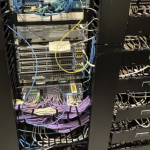
Eco‑Friendly Data Centre Relocation: Green Practices & Compliance
Sustainability as a Strategic Priority
Today’s organisations are under increasing pressure to align operations with environmental responsibility. Data centre relocations, if not managed carefully, can contribute significantly to e‑waste and carbon emissions. By integrating sustainability into every stage of a relocation project, companies can reduce their environmental impact while meeting regulatory and corporate social responsibility targets.
Reusing and Refurbishing Equipment
Rather than defaulting to new purchases, organisations should assess whether existing hardware can be reused, refurbished, or upgraded for the new location. This reduces the demand for raw materials and extends the life cycle of costly equipment. For hardware that cannot be reused, components can often be harvested for spare parts.
Responsible E‑Waste Disposal
Equipment that is truly at the end of its life must be disposed of through certified recycling partners who comply with environmental legislation such as the EU WEEE Directive. This ensures that hazardous materials are handled safely, valuable metals are recovered, and landfill waste is minimised.
Reducing the Carbon Footprint of the Move
The environmental cost of transportation can be lowered by consolidating shipments, using energy‑efficient vehicles, and planning optimal transport routes. At the new location, choosing a facility powered by renewable energy further enhances the green credentials of the relocation.
Compliance and Competitive Advantage
Following standards like ISO 14001 not only ensures legal compliance but can also serve as a differentiator in competitive tenders, as more organisations factor environmental performance into their procurement decisions. In this way, green relocations are both environmentally and commercially beneficial.




